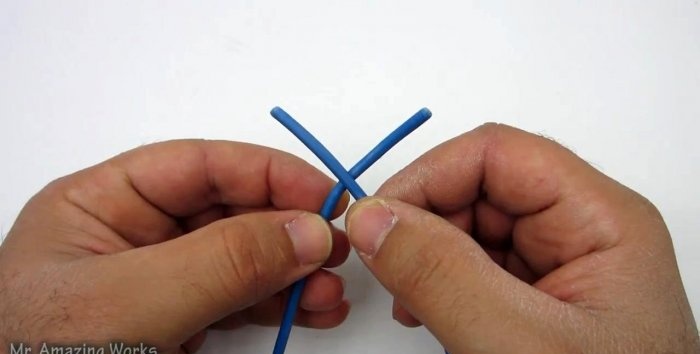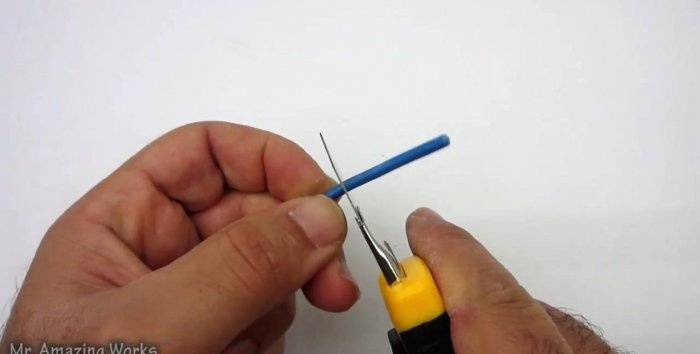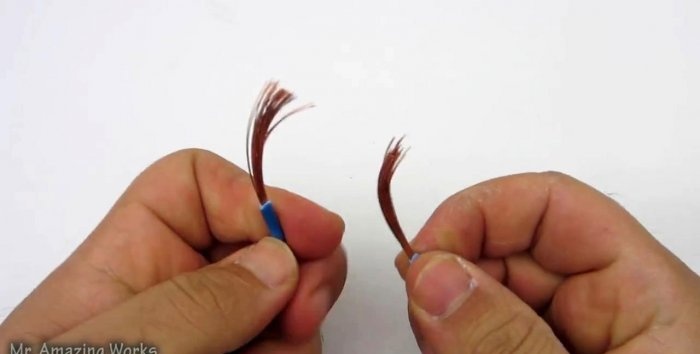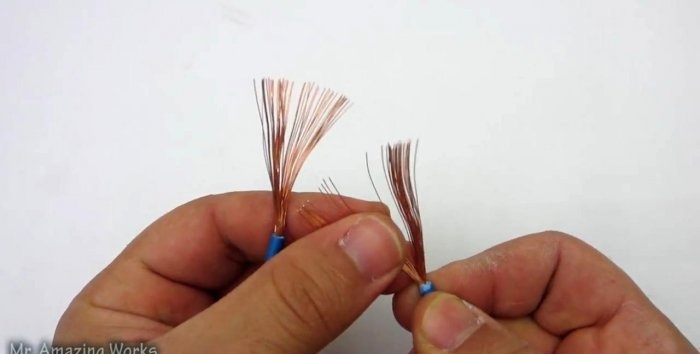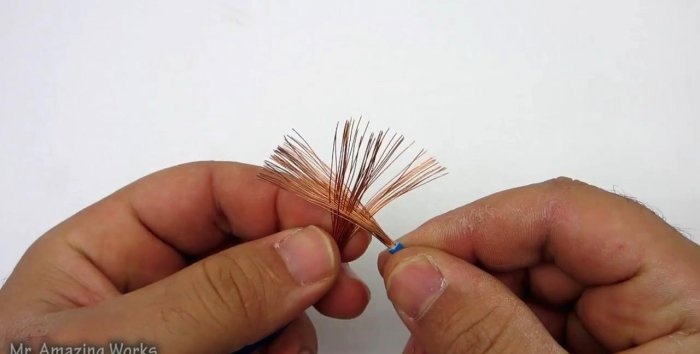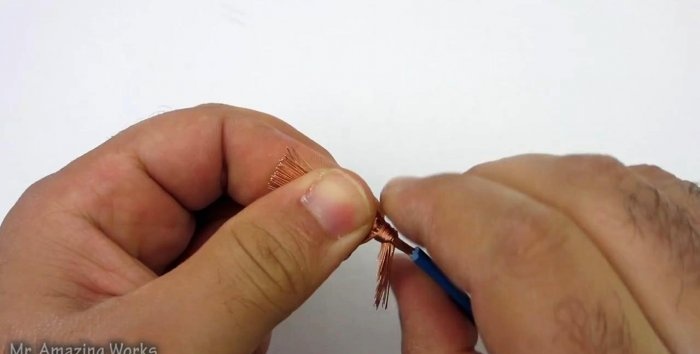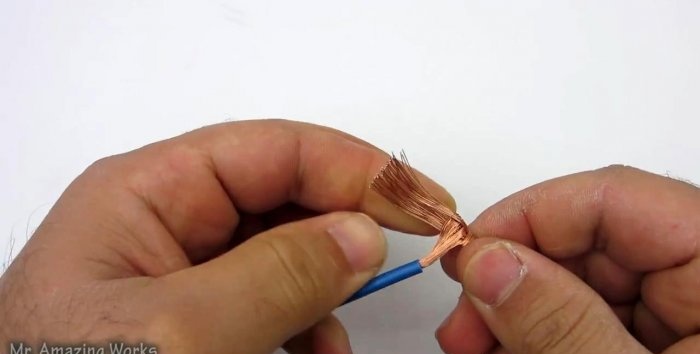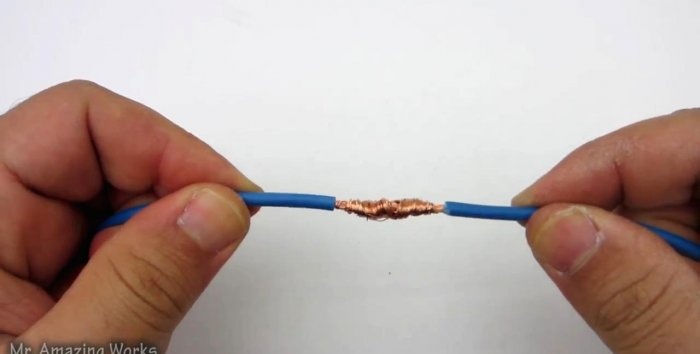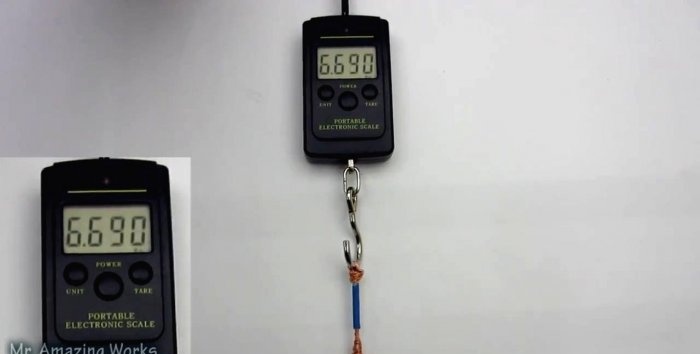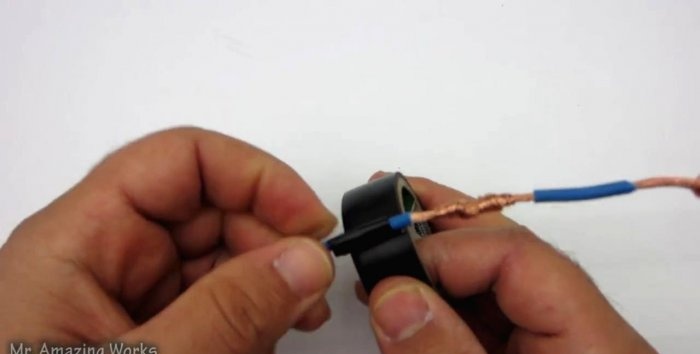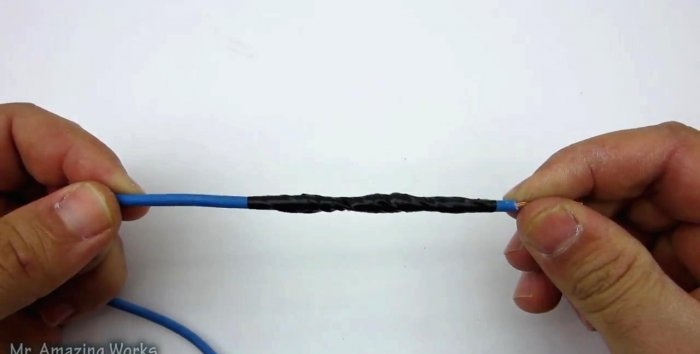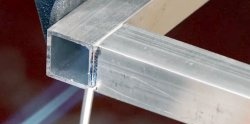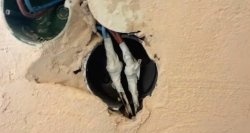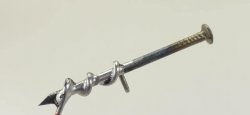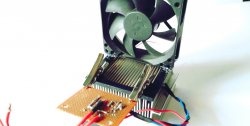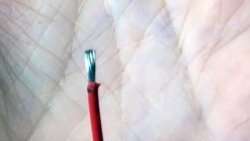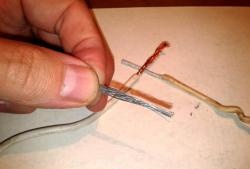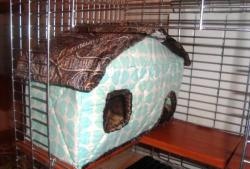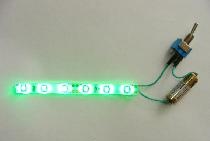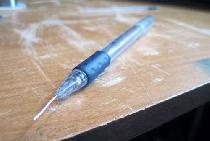I think many had to connect two stranded wires to each other. And most often, people do the usual twisting of the veins among themselves. A wire connected in this way has a low strength and with little effort, the twist can unwind, and the wire breaks. If you have a soldering iron on hand, the twist is usually soldered and the strength of the connection becomes good. But what if the soldering iron is not at hand? How to make a high-quality twist and connect the wires properly?
How to reliably connect wires
Using a clerical knife or stripper, we remove about 3 centimeters of insulation from each end of the wire.
Like this:
Now you need to fluff the veins into a small panicle.
And here the main point: these brushes need to be crossed with each other so that the wires are maximally mixed together. See photo:
The intersection should be approximately in the middle of the bare zone. Next, after procrastination, we wind the right bare section onto the left.
And left to right.
In the end, you should get such a reliable twist of the wire.
Check
We fix one wire on the dynamometer and pull it after the other. It is easy to create a force of the order of 10 kg and the twisting will not unfold, which is an indicator of excellent reliability.
Well, then isolate with heat shrink or conventional electrical tape.
As a result, the wire has the same reliability almost as solid.
Use your friends! For motorists, this is definitely useful, as it has come in handy for me more than once.
I am sure that now you will definitely take this method into service and will use it for the rest of your life, if you need it of course.
Of course, with soldering, the wire will be more reliable, but as they say, what is not, is not.
And if you know a more reliable method - write it in the comments, I'm sure everyone will be interested to learn from your experience.
